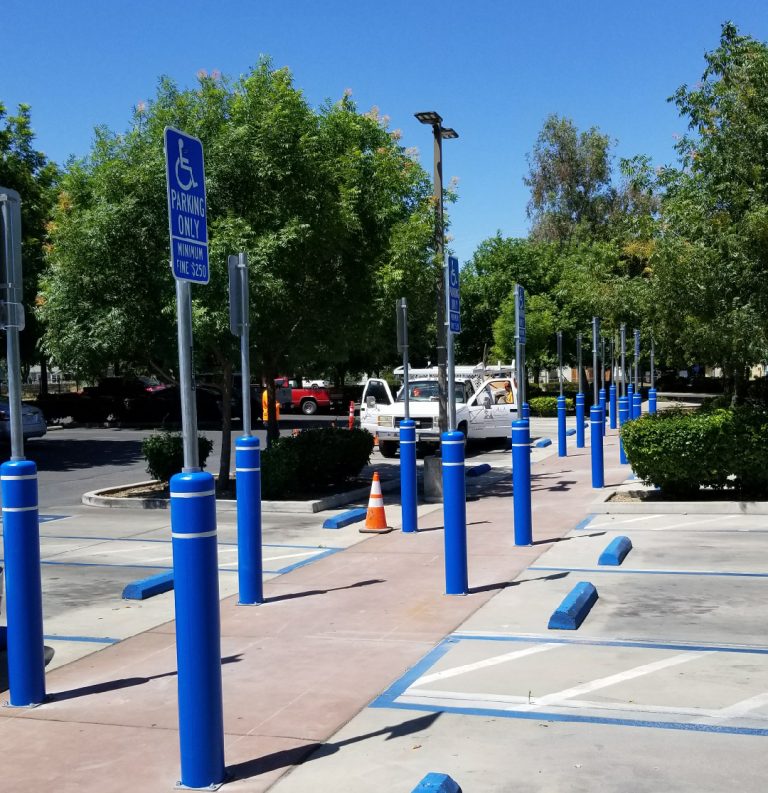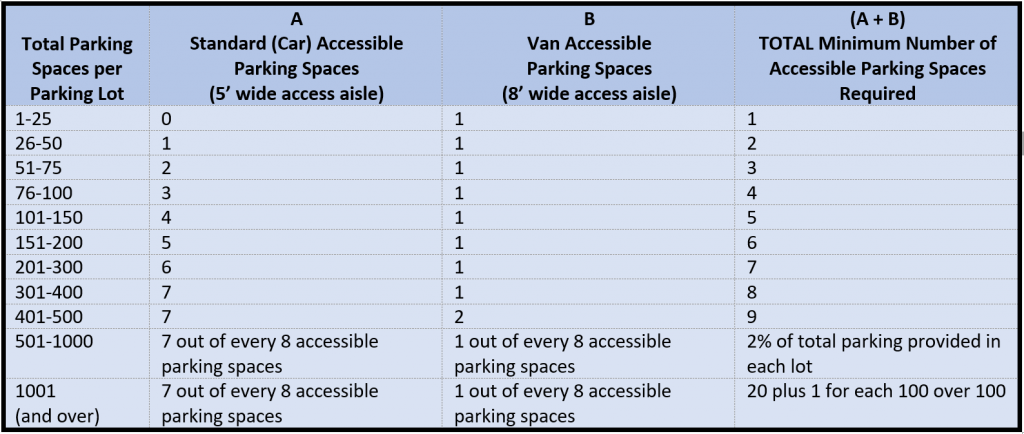The Americans with Disabilities Act was a landmark legislation passed just over 30 years ago that was designed to more fully include people with disabilities in American society. This blog post summarizes the history of the ADA, challenges still being faced today, and requirements for parking spaces and signage designed for people with disabilities.
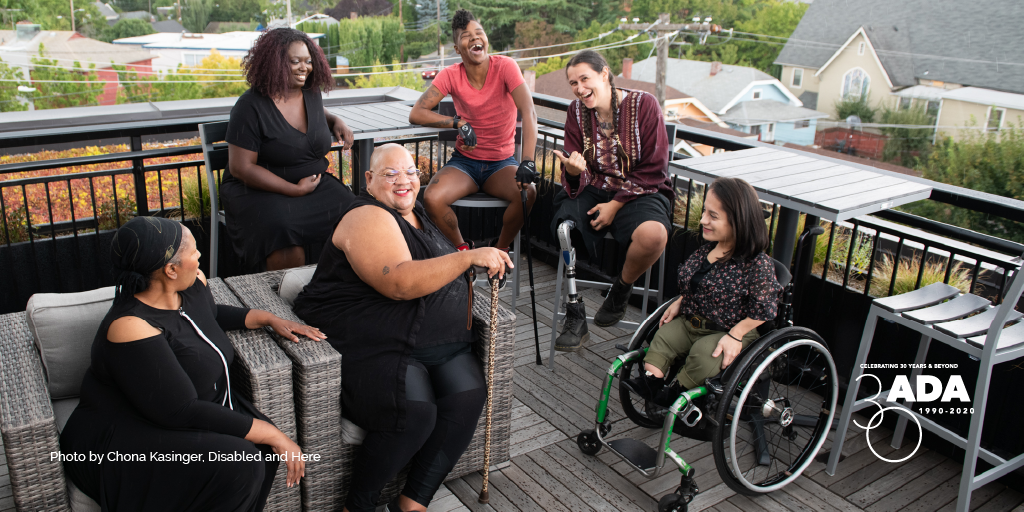
Americans with Disabilities Act – A Brief History
Despite significant progress in disability rights and improved accessibility and inclusion with transportation, schools, housing and federal programs, there were no comprehensive civil rights protections for disabled people in the United States until the signing of the Americans with Disabilities Act on July 26, 1990.
The ADA is based on a basic presumption that people with disabilities want to work and are capable of working, want to be members of their communities and are capable of being members of their communities, and that exclusion and segregation cannot be tolerated.
The passage of the ADA prohibited discrimination on the basis of disability in employment, state and local government, public accommodations, commercial facilities, transportation, and telecommunication – accommodating a person with a disability was no longer a matter of charity, but instead a basic issue of civil rights.
The ADA was signed into law by President George H.W. Bush in one of the largest signing ceremonies in United States history. With the ADA signed, people with disabilities began to challenge societal barriers that excluded them from their communities, and parents of children with disabilities began to fight against the exclusion and segregation of their children.
Local groups to advocate for the rights of people with disabilities were established, and the independent living movement, which challenged the notion that people with disabilities needed to be institutionalized, fought for and provided services for people with disabilities to live in the community. (Source: aapd.com/ada30)
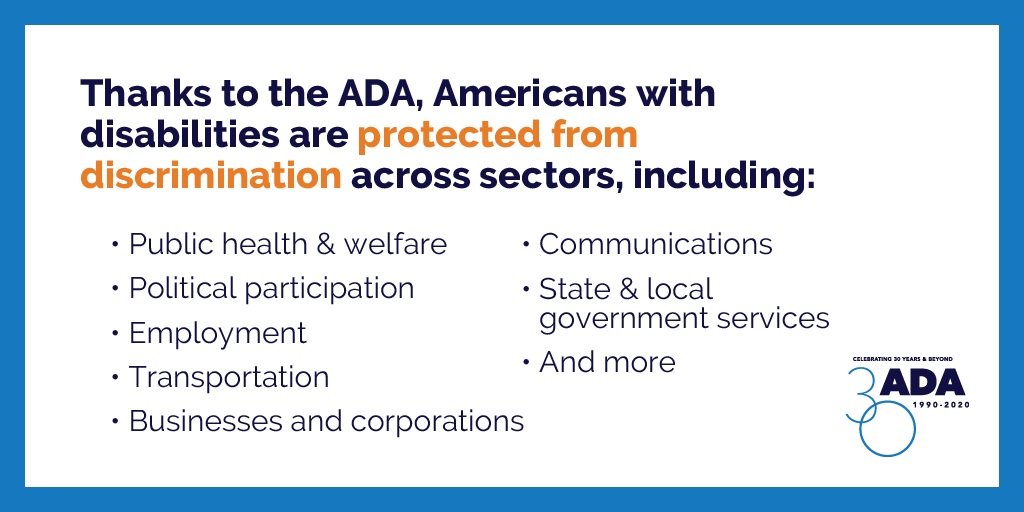
Championing Disability Rights in 2020 and Beyond
The year 2020 marked a significant milestone for disability advocates and organizations working to advance the goals of the ADA: equal opportunity, economic power, independent living and full participation for all. However, there is still work to be done:
- 1 in 5 Americans has a disability, but the community continues to be widely underrepresented in most facets of society.
- Workforce participation for people with disabilities was 19.3% in 2019, compared to 66.3% for those without disabilities.*
* Persons with a Disability: Labor Force Characteristics Summary (2020, Feb. 26). U.S. Bureau of Labor Statistics. - The COVID-19 pandemic exposed enormous gaps in the U.S. healthcare system, entrenched bias against people with disabilities.
Communities must move boldly into the next 30 years of the disability rights movement with a focus on Identity, Community Integration, Healthcare, Employment and Political Participation. Learn more about this movement for a more equitable, inclusive America by visiting aapd.com/ada30.
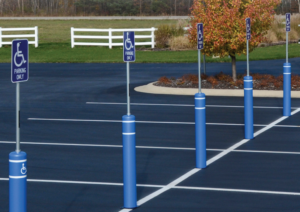
FlexPost Inc. has its Roots in ADA Parking Lot Signage
FlexPost Inc. has its roots in ADA parking lot signage. Our company started in 2006 to help the owners of Rivertown Crossings Shopping Mall in Michigan. Their dilemma of replacing 20-30% of the rigid parking lot sign posts every year due to damage was all too common – and expensive. To solve this problem, a flexible sign post was invented. FlexPost® flexible bollard and sign post products are now being used all over the world!
Flexpost can help organizations such as retailers, hospitals, universities, airports and municipalities save thousands of dollars on annually on parking lot repair costs and minimize damage to both patron’s vehicles and parking lots. Our flexible sign posts and bollards are designed to take multiple hits and bounce back when struck.
All patented FlexPost systems are constructed of galvanized steel and are manufactured in the USA. The FlexPost family expanded when the FlexBollard® system was introduced in 2008. These innovative units provide the flexibility of the standard FlexPost, with the rigid appearance of a concrete bollard.
FlexPost installation is very easy, takes less than 30 minutes and can be done without special tools. FlexPost products can be installed on many surfaces including concrete, asphalt and natural ground. The adhesive anchoring option allows FlexPost systems to be installed in high rise parking structures where the floors cannot be penetrated.
In addition to increasing safety, our flexible signpost and bollard systems eliminate the unsightly appearance of bent or broken signage, and are also safer for pedestrians.
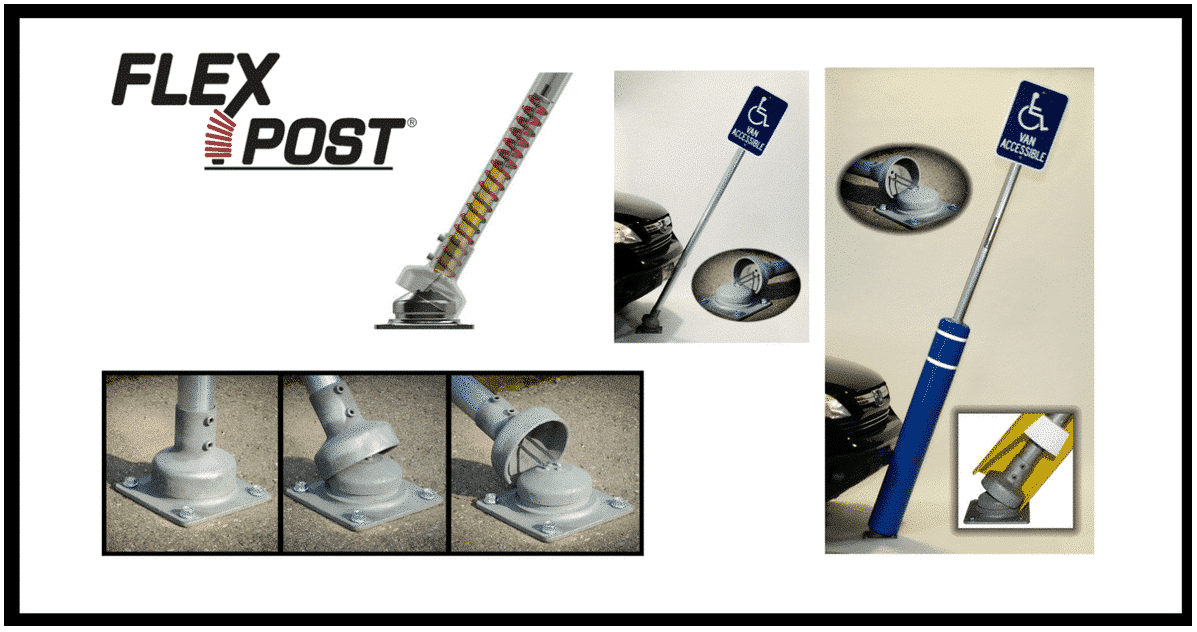
ADA Parking Spaces and Requirements for Signage
All businesses or privately held facilities are required by law to follow federal ADA guidelines. ADA access signs need to be posted at properly designated accessible parking spaces. These handicap accessible parking spaces must be identified by signs that include the International Symbol of Accessibility. Signs at van-accessible spaces must include the additional phrase, “van-accessible.” Federal specifications for ADA handicap signage also require that the bottom edge of the sign must be more than 5 feet from the ground. In addition, the size of the handicap parking sign must not be smaller than 12″ x 18″.
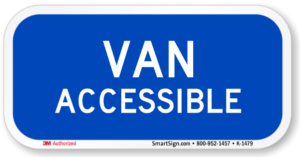
Our FlexPost-XL™ and FlexBollard-XL™ with Signpost are designed with ADA requirements in mind. Our 8 foot post is recommended to ensure ADA signs are kept in high-visibility, and our heavy-duty XL base supports both regular-sized and large regulatory signs.
To meet ADA requirements, handicapped parking spaces should be large enough for the vehicle to be easily parked. Along with this, ample space to the left or right of the vehicle must be available to allow a wheelchair to exit the vehicle without difficulty.
The ADA distinguishes parking spaces into two types: Van Accessible and Standard (cars). This designation defines the width of the access aisle required for each type of parking space. Accessible parking spaces need to be at least 96 inches (8 feet) wide and have an adjacent access aisle. In the case of Van Accessible parking spaces, an 8 foot wide adjacent aisle is required. Standard vehicle parking spaces must have a 5 foot wide access aisle adjacent to a parking space.
The number of handicap accessible parking spaces that must be provided in a parking lot is determined by the total number of spaces in each lot. The chart below shows the minimum number of handicap parking spaces required, per the ADA. (Source: ADA.gov)
It is important to note that while the ADA provides a central set of guidelines for handicap parking spaces, state and local governments have the authority to impose their own codes, as long as they meet or exceed those contained in the ADA. Therefore, it is important to check with state and local authorities to ensure compliance. Get more information and technical assistance for complying with the Americans with Disabilities Act here. Also, find additional ADA resources at ada.gov.
Also, while the design specifications for handicap parking signs is consistent at the federal level, design requirements for ADA signage can vary by state. Each individual state may also have supplemental sign requirements. Supplemental ADA parking signs are typically placed under the larger handicapped reserved parking signs.
For more information on each state’s rules and specific ADA sign designs, including supplemental signage requirements, click here.
For more information on ADA parking lot sign post solutions, contact FlexPost today.

